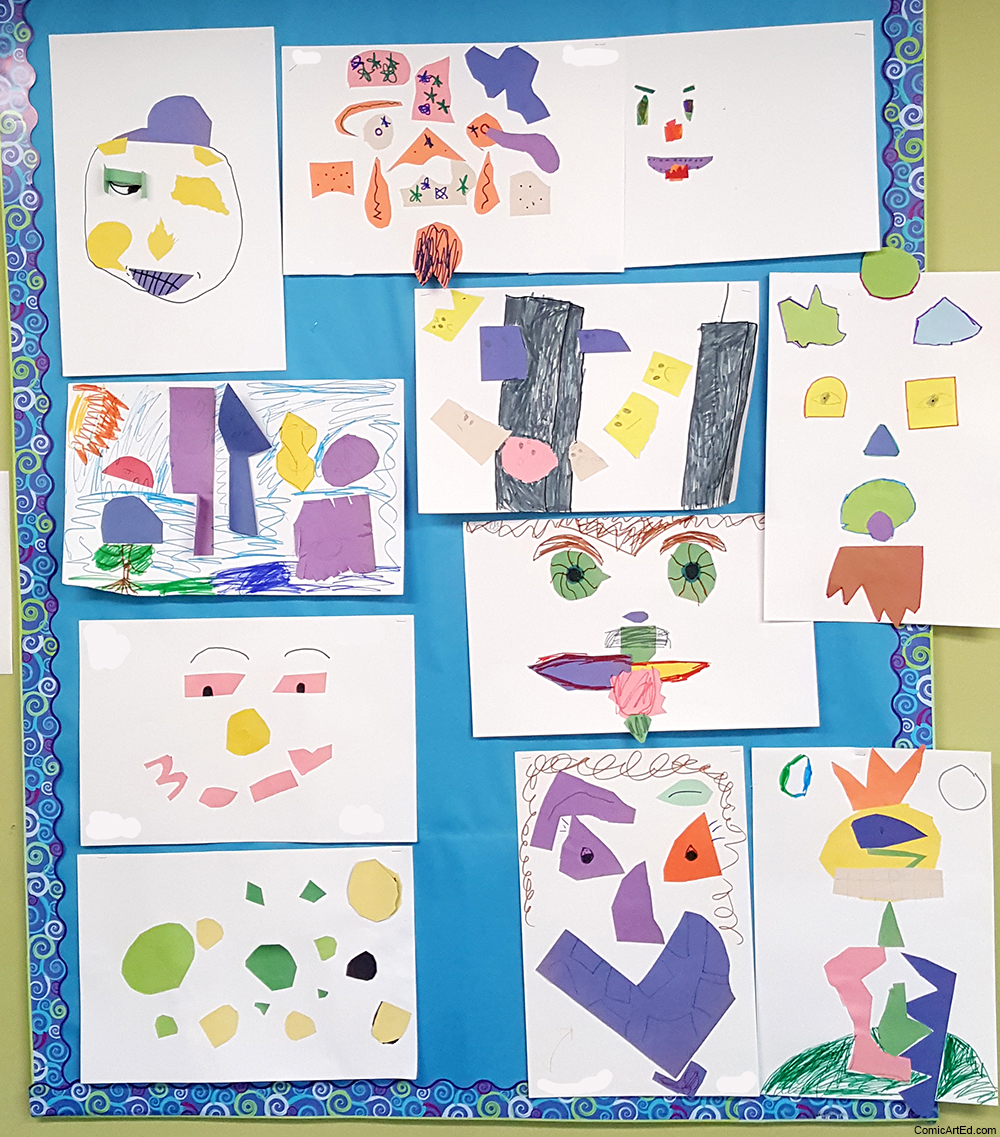In The Classroom - Feelings Faces, an Elementary Social-Emotional Arts Activity
Cathy G. Johnson
This summer I got to work with Pre-K through 8th grade students at an awesome 6-week program in Massachusetts. With the 3rd + 4th graders I developed a half-hour long arts activity for them to help identify and categorize the different emotions a person can feel. The idea of this activity was to use the facial expression of cartooning to help build students' empathy, and to create tangible images for their intangible feelings.
Feelings Faces by 4th graders!
Feelings Faces, an Elementary Social-Emotional Arts Activity
Materials List:
Feelings Faces by 4th graders.
various colored construction paper
large white paper (12" x 18" shown)
scissors
glue sticks
markers
Lesson Plan:
3rd graders hard at work!
Define "Symbols" and "Symbolic" with the students. I begin this activity by asking the class if anyone knows what a "symbol" is, or can name a symbol. Then I draw a heart on the board; most children know this represents "LOVE!" So a symbol is a simple shape that can represent something much greater, something that maybe can't be easy to draw or define. (Another example is that a star can say "Good job!")
Students invent their own symbols for different feelings. Using construction paper and scissors, students are prompted to cut out their own symbols to represents their different emotions.
I start out with "happy," then "sad." You can then go around the class and students can name their own feelings.
Some good ones to explore are "anger," "frustration," and "bored." These are feelings elementary children can have, but are often told they are not allowed to feel. This activity can help students express these emotions in a healthy way, while also putting them alongside more positive feelings, such as "excited" and "surprise."
"Fear" is also a good emotion to have a conversation about, especially in a safe, neutral place such as the art classroom.
Students collage their feelings symbols into a face. Onto large white paper, students are prompted to use glue sticks to collage the symbols into a face.
As a class, you can now have a conversation about how all people can have all these different feelings. Just because you feel angry sometimes, does not mean you lose your ability to feel happy. Sometimes you feel sad, and sometimes you feel jealous. And this is true for everyone.
Finish up the faces with markers. Students can now add detail to their Feelings Faces using markers.
Some students chose to collage a whole person's body with their feelings symbols. (3rd grade)
3rd graders' Feelings Faces!
Why different materials?
For elementary classes, I love to jump from material-to-material and from tool-to-tool. This way I am not asking the students to do one activity for too long. It keeps my classroom exciting. I also like using construction paper and collage to help students draw, because drawing on a big white piece of paper may be daunting.
Lesson Goal
The goal of this lesson is to help young people explore all the emotions they may feel, as well as what other people may feel. It's to help them know that sometimes they may feel angry, frustrated or scared, and that's okay. Sometimes anger or sadness can take a person over, and feel like it's the only feeling we will ever have. This activity is designed to help students understand that all people have multiple emotions inside of us, and just because one may feel really big, the others are still there.




